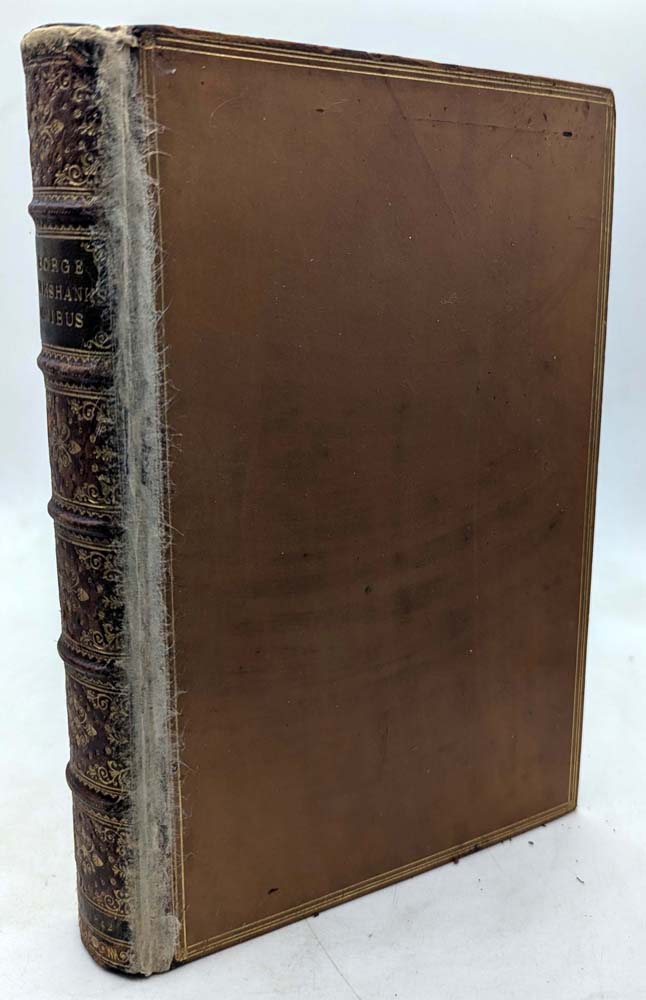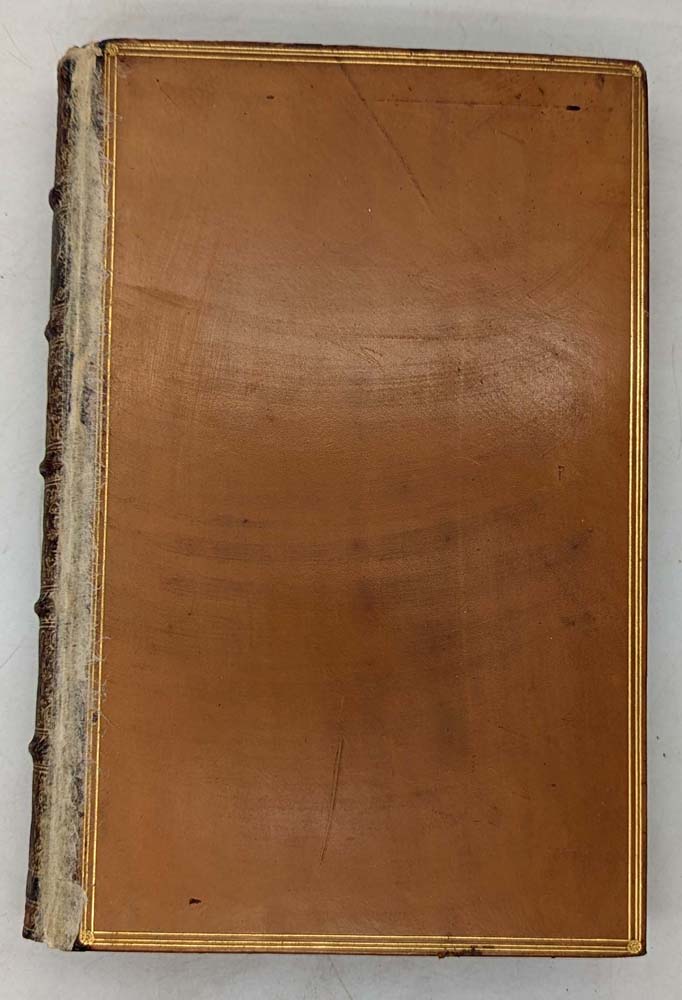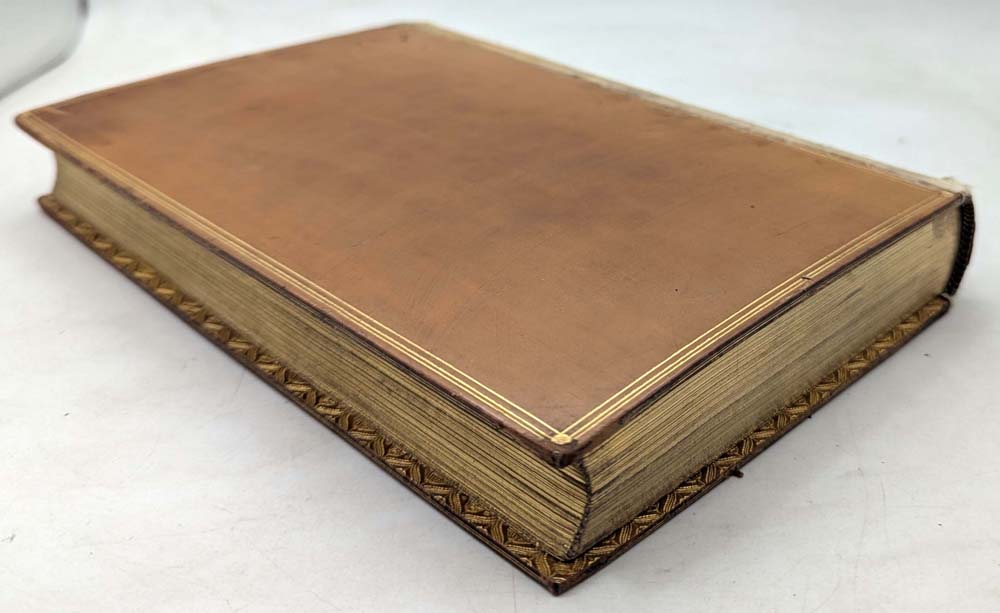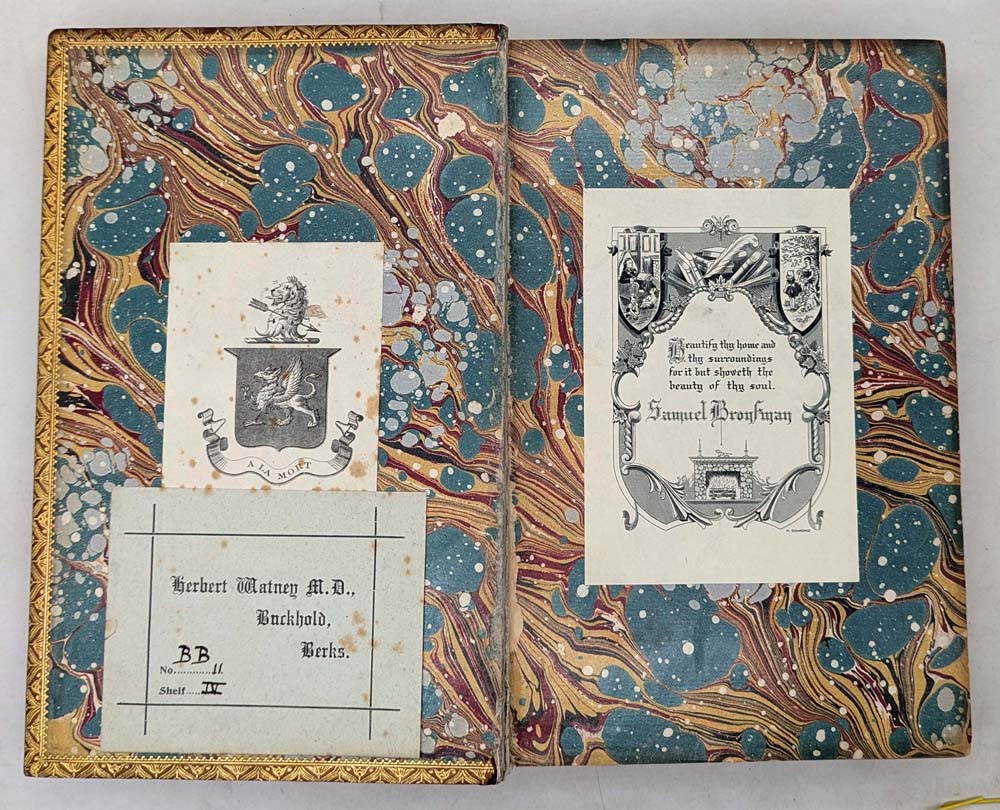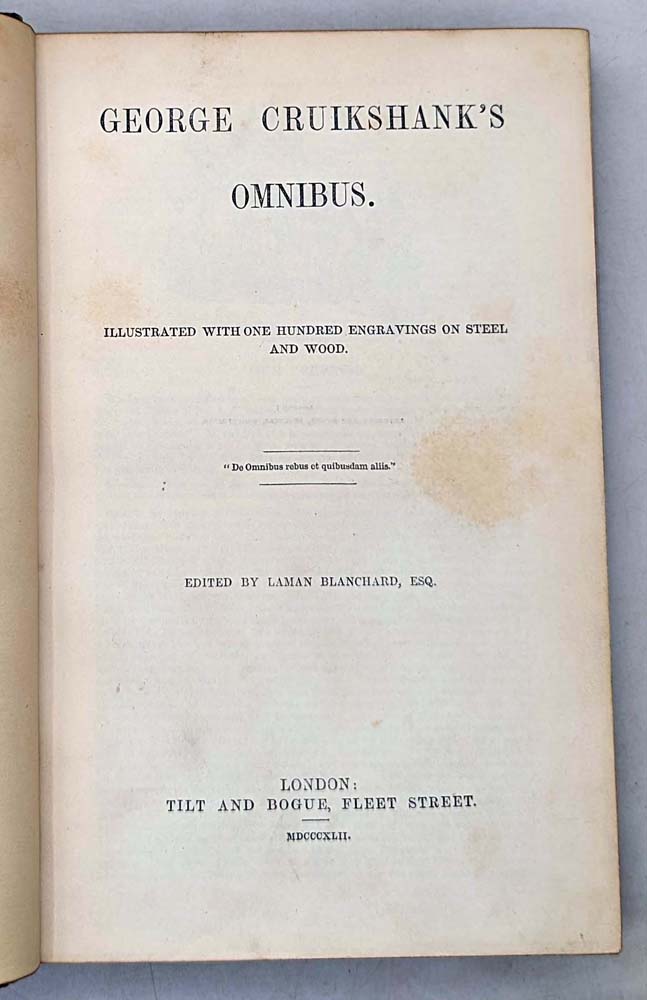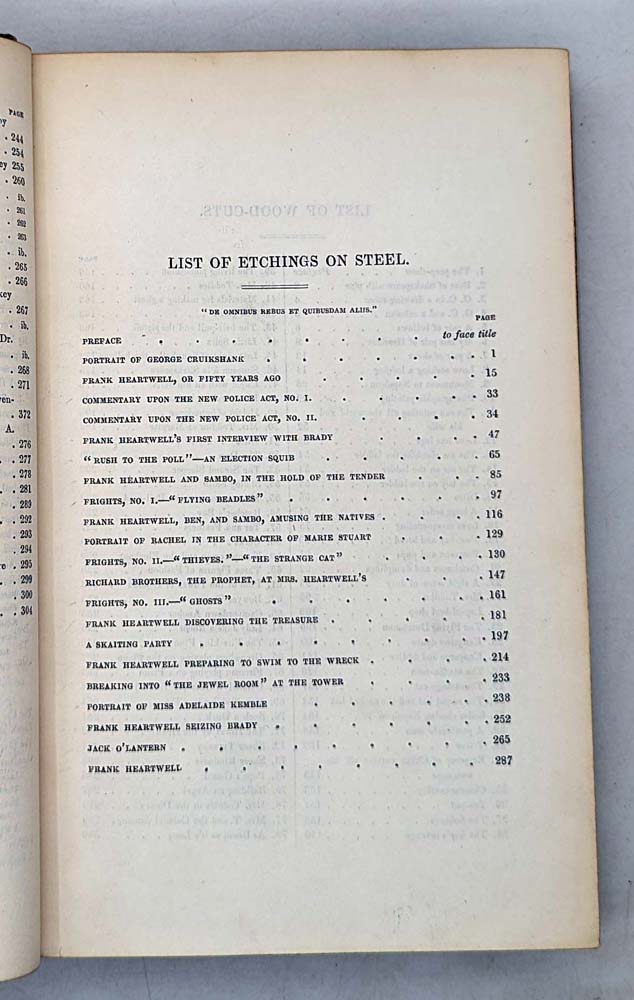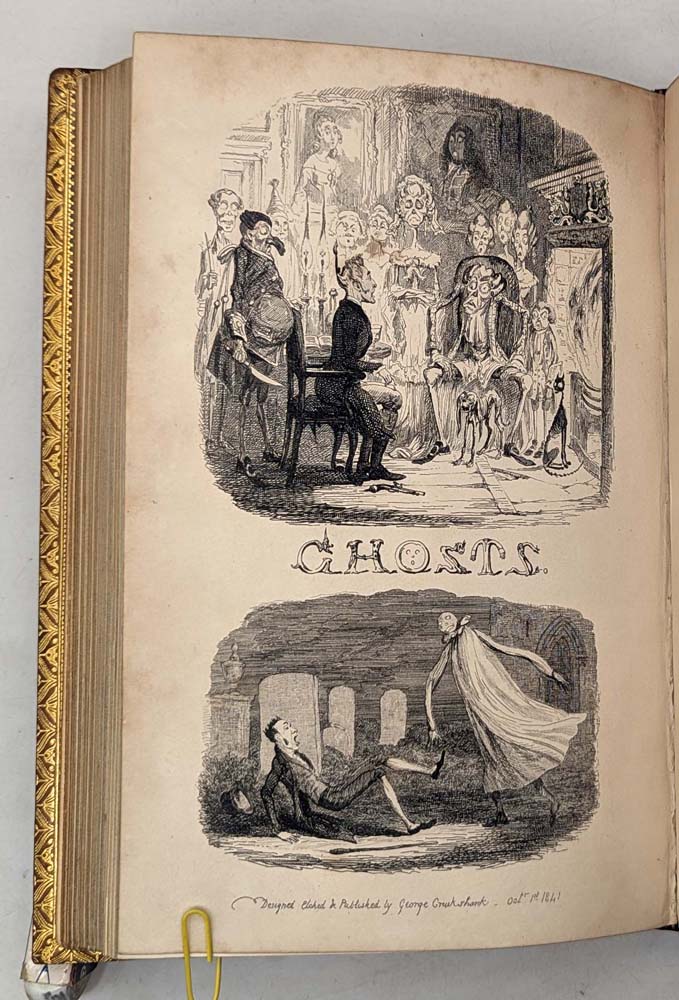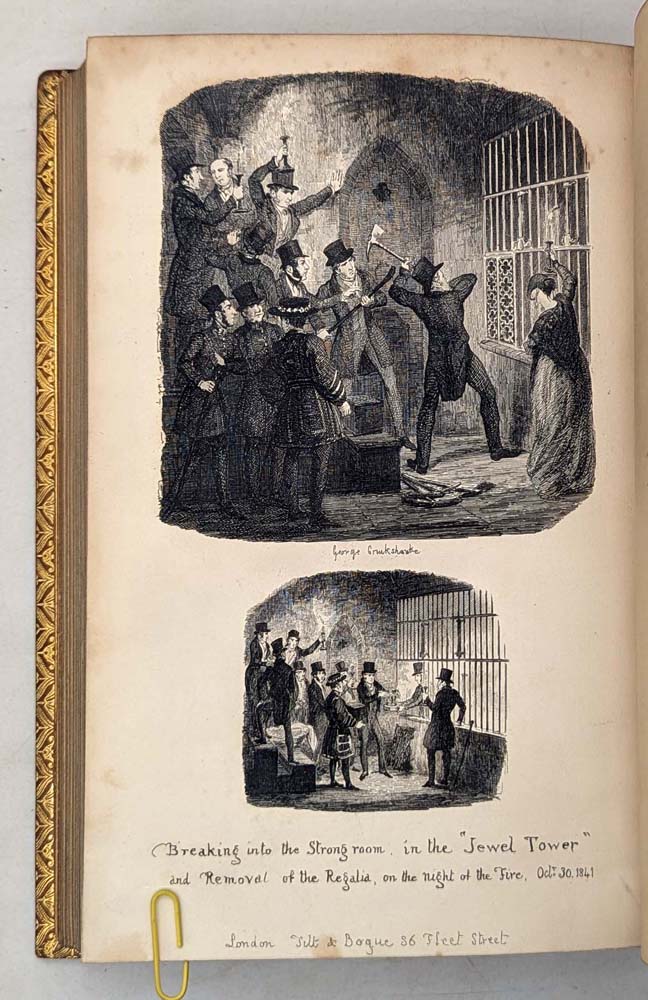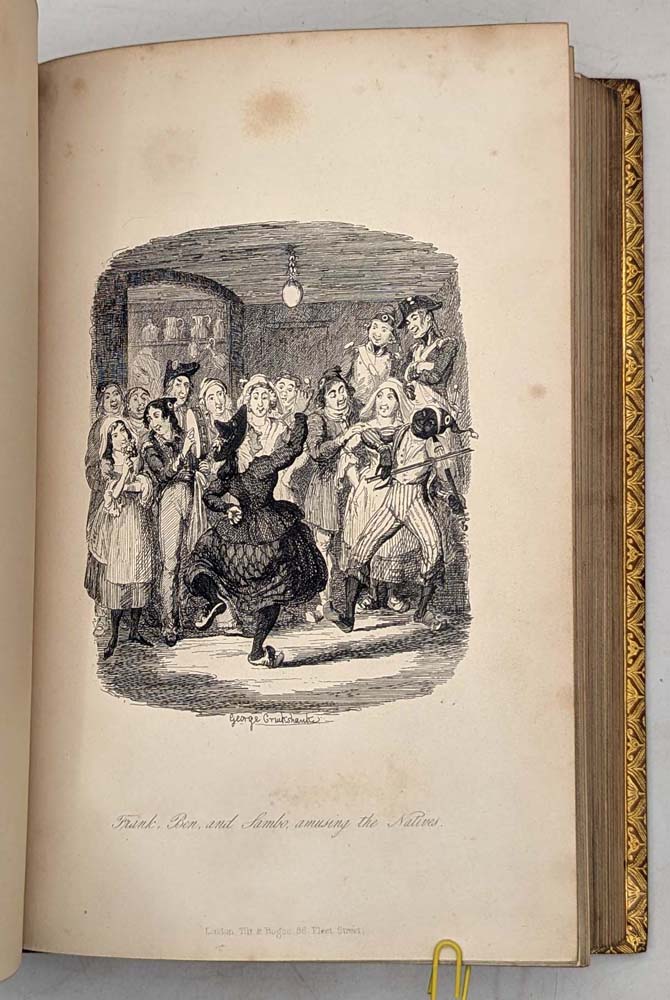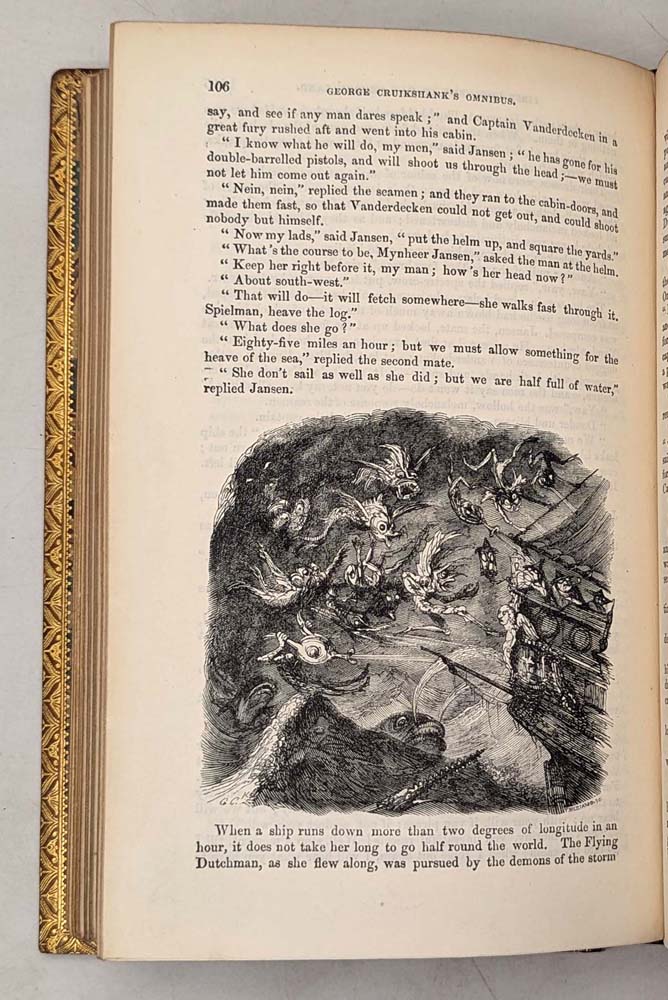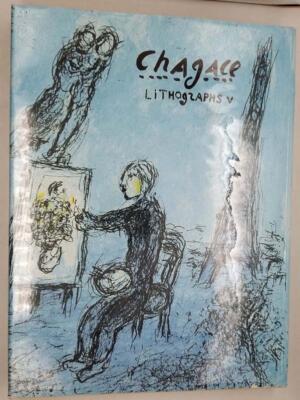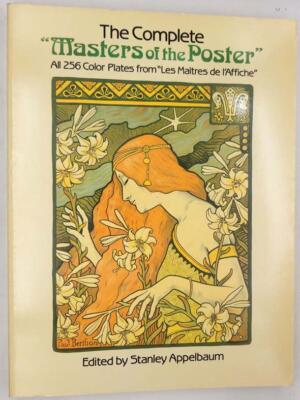George Cruikshank’s Omnibus, first published in 1842, is a vibrant and eclectic miscellany that showcases the incredible range of Britain’s most celebrated illustrator and social satirist at the height of his powers. Edited by the popular writer Laman Blanchard, the “Omnibus” (meaning a “vehicle for all”) was designed as a literary and artistic carriage filled with a variety of content to entertain a broad audience.
The volume is a rich anthology featuring short stories, sketches, essays, and poetry from prominent authors of the day, including William Makepeace Thackeray, Albert Smith, and the Brothers Mayhew. However, the true star and primary attraction is Cruikshank himself. The publication was conceived as a showcase for his art, and every piece is lavishly illustrated with his distinctive etchings and woodcuts.
The content within the Omnibus is diverse, reflecting the Victorian appetite for humor, social observation, and the mildly grotesque. It includes comic tales of everyday life, ghost stories, social satire poking fun at fashion and folly, and descriptive pieces of London scenes. The common thread is Cruikshank’s unmistakable artistic style—his keen eye for detail, his exuberant caricature, his masterful storytelling through image, and his ability to capture the essence of Victorian character types, from the ridiculous to the sinister.
While not a narrative itself, George Cruikshank’s Omnibus stands as a significant artifact of its time. It represents a specific moment in publishing, where a single artist’s fame could carry a entire periodical. For modern readers and viewers, it serves as a delightful and comprehensive sampler of Cruikshank’s immense talent beyond his more famous work for book illustrators like Dickens, offering a fascinating window into the popular culture and graphic humor of mid-19th century Britain.
